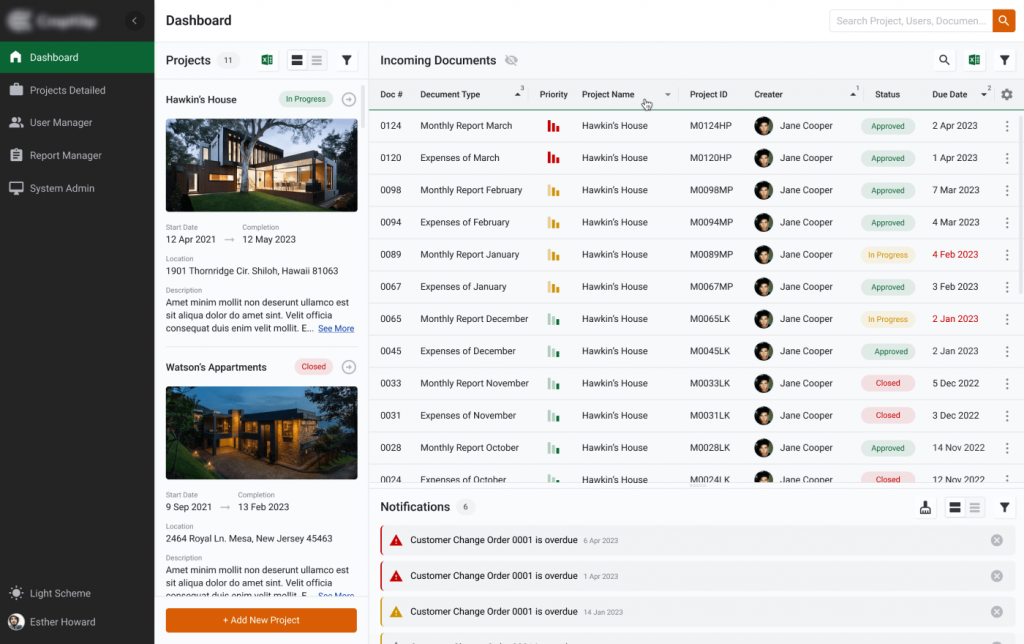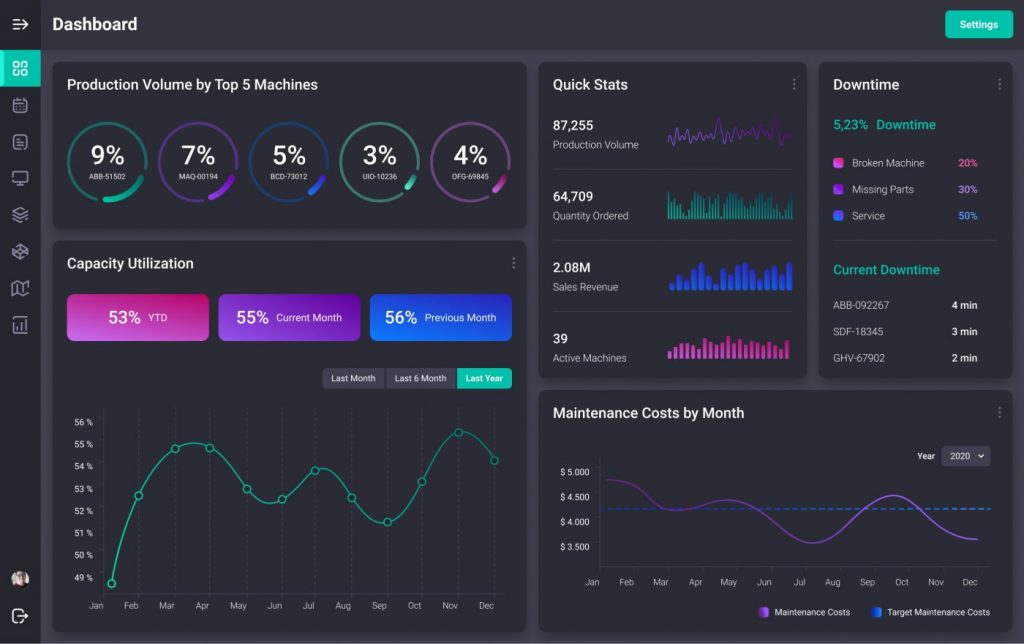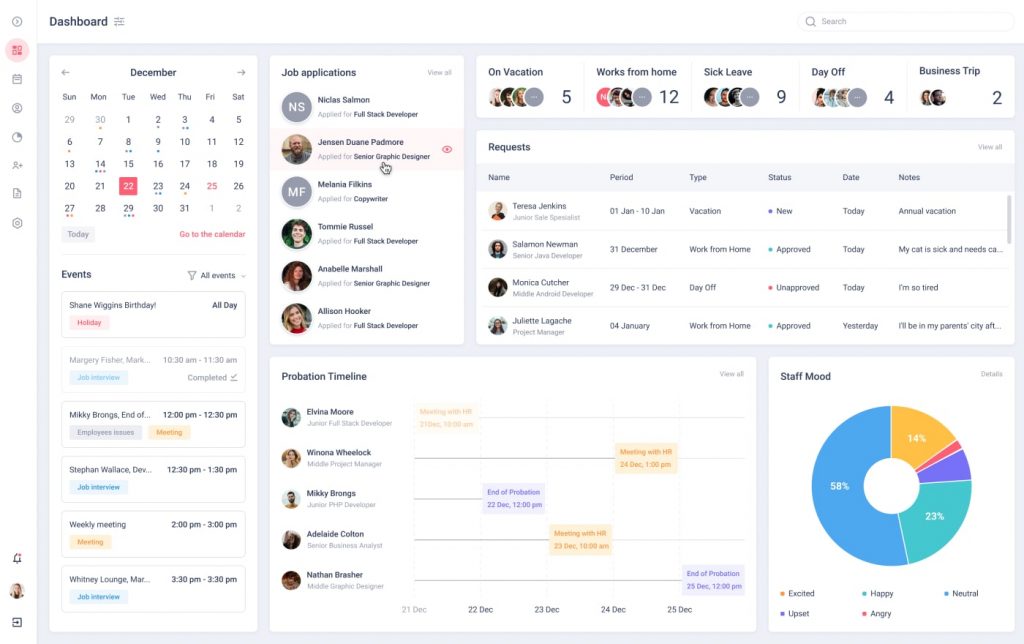We often work with clients who come to us asking to rebuild their existing applications rather than rebuilding them from scratch. Sometimes, a client’s company relies on outdated critical business software that has been the backbone of its operations for many years. Over time, as such applications become obsolete, they hinder growth and innovation and cause multiple issues, including security risks, inefficient infrastructure, and performance bottlenecks. Many organizations struggle to develop new solutions from the ground up, deterred by the daunting task of recreating complex applications and the substantial resources required.
That’s precisely when software modernization can come to the rescue. In a way, it can feel like trying to patch an old torn blanket to make it last longer instead of buying a new one. However, with a proper approach, introducing changes to the working legacy application can help create more effective and reliable solutions that correspond to current requirements and ensure future growth. Integrating modern functionalities in existing applications helps bridge the gap between old and new.
Software Modernization Challenges We Usually Face
Each application we work with is different from all others, and we treat them accordingly. The more applications we modernize, the easier it is for us to classify them into one category or another, which helps us identify several main groups of challenges we need to solve.
Redesigning Legacy Systems
Customers often ask to modernize legacy applications without fully understanding the complexity of such a task. Projects of this kind require not only changing the user interface, but also revisioning of all business logic. As a result, it requires completely rewriting both backend and frontend components.
Rewriting business logic in such scenarios introduces additional issues. It’s not always easy to understand the application’s original intent and the potential for introducing new bugs or inconsistencies. Documentation review can be a good starting point for understanding the original design and intended business logic.
Unfortunately, documentation is not always available and sometimes inconsistent. Especially when we speak of decade-old apps that different development teams have worked on over the years. In this case, our developers must somehow extract business rules from the legacy app. There’s a wide range of possible solutions, including business analysts interviewing the business people who interact with the application, reverse engineering, utilizing code analysis tools, and others.

Detailed Project Overview: UI/UX Modernization for a Construction Management Web App
Issues: The client’s application had a complicated backend and legacy frontend. There was a lack of unified UI/UX design across different parts of the construction project management software. The app’s functionality flow was stiff, with old controls and a lack of user-friendly features. Static forms without dynamic form options made the user experience challenging. There was also a lack of ability to configure forms and tables according to business requirements and a lack of documentation for the legacy software.
Our Solution:
- Implemented Dynamic Forms and Tables allows users to customize their interface.
- Backend-to-Frontend Configuration: Ensured dynamic loading and consistent styling of elements, with backend control over the app’s appearance.
- Webix JavaScript UI Library: Used to rebuild the front end, introducing features like global search, complex filtering, and customizable table configurations.
- UI Design Enhancements: Replaced bulky icons with intuitive text buttons, introduced light and dark themes, and customizable theme settings.
- User Lists and Role Management: Enhanced with photos and detailed information, with more flexible access rights.
- Transition Feature: Users can switch between old and new UI for a gradual transition.
- Advanced Components: Integration of Webix Report Manager, Document Manager, and User Manager for improved reporting, file handling, and role management.
As a result, the modernization transformed the client’s application with a consistent, intuitive user experience, greater interface control, and enhanced collaborative capabilities.
Database Update
It is widespread to save vast amounts of data when modernizing legacy applications. Customers often want to save their data and integrate new functions. This requires migrating the existing data structures (e.g., data models, database tables and schemas, etc.) and sometimes creating new ones. It may be necessary, for example, when the customer’s company changes business processes and introduces new workflows or changes in legal requirements necessitate new data structures. It can pose a significant risk to the business without a proper approach.
One of the most significant issues we can face is the loss or corruption of valuable business data. To avoid it, we can choose between multiple solutions, including performing data audits, implementing backup strategies, ensuring the data formats between old and new software versions are compatible, and more.

Detailed Project Overview: Advanced ERP Software for Manufacturing Company
Issues: The client used various legacy applications and databases across different departments, leading to inefficiencies and decreased productivity. Switching between applications for production planning, customer information, task assignment, and performance assessment caused workflow disruptions. There was a need for a centralized ERP solution to streamline information flow and extract valuable insights.
Our Solution:
- Automated Data Management: Delivered an ERP system that automatically gathers, stores, and analyzes enterprise-wide data.
- Data Migration: We employed migration scripts to collect, migrate, and map data between the old and new systems. The risk of data overwriting or duplication was mitigated through a meticulous data mapping process. Developers identified data matching markers (typically key fields such as user data, dates, and objects) to compare existing and incoming data. This strategy ensured the uniqueness of each data entry, effectively preventing duplication or overwriting issues.
- Real-Time Data Access: Provided real-time data on warehouse material availability and alerts for potential shortages.
- Data-Driven Decision-Making: Added a reporting module that collects and presents information on product demand, team productivity, machinery downtime, and production costs through a BI dashboard.
In collaboration with our client, we transformed their business operations by automating and enhancing their processes. This initiative involved phasing out outdated applications and introducing a modern, intuitive ERP system designed for efficiency and ease of use.
Developing and Expanding the Existing Application
Customers who want their apps to evolve and grow often face the necessity to rewrite a significant part of the code or start development from scratch to ensure high-quality work and implement new functionality. In such scenarios, before expanding the application, our team needs to perform architecture review, codebase analysis, dependency check, security audit, and other activities to ensure smooth integration of new functionalities and avoid disruption of the existing app.

Detailed Project Overview: Human Resources Information System
Issues: The competitive job market requires implementing efficient recruitment techniques to attract and retain talented job seekers. Retaining newly hired employees, maintaining productivity, and ensuring employee satisfaction require continuous functionality improvement and thorough analysis tools.
Our Solution:
- Enhanced ERP Functionality: Implemented and integrated a comprehensive HR management solution.
- Improved Employee Information Access: Enhanced access to employee information, scheduling, planning, and visualization of company structure.
- Time and Attendance Tracking: Implemented time and attendance tracking capabilities.
- User Interface Improvement: Upgraded the outdated UI for better end-user convenience.
- Integrated HRIS Features: Added functionalities such as job portal integration, candidate filtering, recruitment funnel optimization, calendar and schedule management, personal employee cards, and organizational structure visualization.
- Technology Stack Upgrade: Upgraded the technology stack to include modern UI frameworks and tools such as DHTMLX and Webix.
HRIS was painlessly integrated into the client’s ERP system without causing any interruption in the company’s work.
Implementing New Features for Systems With Outdated Backend
Customers may want to implement new features when their current applications don’t support them due to outdated code. Often, the only possible solution is to rewrite the backend entirely. The cost of maintaining old code is a significant concern for many organizations. It’s often referred to as technical debt, which can accumulate over time and lead to increased maintenance costs, inefficiencies, and security vulnerabilities.
Read also Technical Debt: Where Comes From and How to Manage It
Techniques We Use to Solve the Challenges
When modernizing legacy software, completely rewriting the application’s code isn’t always the most effective approach. Instead, we aim to balance preserving existing functionality with introducing new enhancements. The decision on how much code to rewrite depends on various factors, including time constraints, budget considerations, and the customer’s business objectives. In our practice, we usually choose from the following options.
Restructuring and Reengineering
We focus on analyzing the application’s current state and determining which parts can be retained without harming the modernization process. This allows us to offer solutions with an optimal price/quality ratio.
Main steps:
- Assessment. We evaluate the existing applications’ architecture, codebase, and dependencies.
- Identification. Here, we aim to determine the crucial components of business operations that we can retain.
- Modification. Our development team alters or rewrites parts of the code to improve the application performance, maintainability, and integration capabilities.
- Testing. The QA team tests the modified app to ensure its stability and functionality.
- Deployment. After the application is brought to its updated state, we implement the restructured app into the production environment.
Read Also: Code Rewrite vs Code Refactoring. Choosing the Best Code Transformation Tactics
Pros:
- Cost Efficiency. By retaining some functional parts of the app, we reduce the need for complete redevelopment. This helps customers save money on legacy software modernization.
- Risk Mitigation. We introduce changes incrementally instead of performing a one-time full-scale replacement. This step-by-step approach helps lower the risk of application failure.
- Business Continuity. Our approach allows for ongoing operations without significant downtime during the modernization process.
Cons:
- Complexity. Understanding how the legacy application operates and working within all its constraints can be challenging.
- Limited Improvement. When developers are limited by the necessity to retain some parts of the legacy application, there may be a ceiling to the achievable improvement level.
- Potential for Hidden Issues. Legacy code may contain issues that could surface during or after modernization.
Data Migration
Our expertise shows that analyzing and prioritizing the data required for the future application to operate effortlessly is critical. It helps to ensure the seamless transition of vital information to the new app. We strive to preserve essential information while weeding out outdated and unnecessary data.
Read Also Brushing the Rust Off Your Software. The Importance of Legacy Migration
Main Steps:
- Data Assessment. We evaluate the data within the legacy system for quality, volume, dependencies, and used formats.
- Determine Migration Objectives. At this step, we establish precise, measurable goals for the migration that resonate with the customer’s business objectives. For example, we focus on data accuracy and consistency, compliance with industry standards, and more.
- Project Planning. Our team crafts a robust plan outlining the scope, timeline, resources, budget, and critical milestones.
- Data Mapping and Integrity Checks. Strategizing the transfer of data from the old to the new app helps avoid data overwriting or duplication and ensure integrity.
- Testing and Validation. Our development team executes comprehensive testing before, during, and after migration to confirm data accuracy and application functionality.
- Post-Migration Review and Support. Our company conducts an exhaustive post-migration application review to verify data quality and provide support and training to users.
Pros:
- Data Integrity and Quality. A well-planned strategy ensures that the transferred data is moved to the new application version and cleaned, standardized, and transformed as needed.
- Minimized Downtime. Effective data migration minimizes operational disruptions during the modernization process.
- Future-Proofing. A proper migration approach ensures the new application has relevant, up-to-date data supporting evolving business needs.
Cons:
- Complexity. Dealing with outdated or inconsistent data formats can be intricate and demanding.
- Resource Intensive. Modernization requires significant resources for planning, executing, and validating the migration process.
- Risk of Data Loss. Improper handling during migration could lead to data loss or corruption.
Integration and Development
During legacy software modernization, we often create temporary solutions that enable a gradual transition to a new application. It includes creating a single entry point for old and new app elements, which simplifies the implementation of new features.
Main Steps:
- Designing the Integration Architecture. We develop an architecture that supports both legacy and new application components.
- Creating the Unified Entry Point. Next, our developers construct a gateway that directs traffic to the appropriate parts of the application.
- Ensuring Compatibility. We need to guarantee that new developments are compatible with the existing legacy app.
- Developing New Features. Now, we can build new functionalities to integrate with the legacy application.
- Testing and Quality Assurance. The QA team conducts thorough testing to ensure seamless integration and the correct functioning of the new features.
- Iterative Implementation. We gradually implement changes in a controlled manner to minimize disruption.
Pros:
- Flexibility. Following this approach, we can add new features without completely overhauling the legacy application.
- Reduced Risks. We can minimize the risk associated with big-bang integration by allowing for incremental changes.
- Cost-Effectiveness. Modernization becomes more cost-effective than an entire system rewrite, especially in the short term.
Cons:
- Complexity. Managing two apps simultaneously can increase complexity.
- Temporary Solutions. Interim solutions may become permanent if not appropriately managed, leading to technical debt.
- Potential for Inefficiency. The need to maintain compatibility with the legacy application can limit the performance and functionality of the new application.
Read Also Busting Common Myths Regarding Legacy Software Modernization
Conclusions
Our expertise shows that successful modernization requires technical skills, deep strategic analysis, and the ability to think outside the box and make non-standard decisions. Reengineering and restructuring create stable, effective, and flexible systems that correspond to current and future business needs.
Choosing between maintaining old and developing new apps depends on the task’s specifics and the customer’s capabilities. The critical aspect of successful modernization is a scrupulous analysis of the existing system, a deep understanding of the client’s business processes, and proper planning of all project stages. Combining all these factors minimizes risks related to moving to a new system and ensures operational stability during large-scale transformation. If you want to discuss the modernization of a legacy app you have, please contact us.